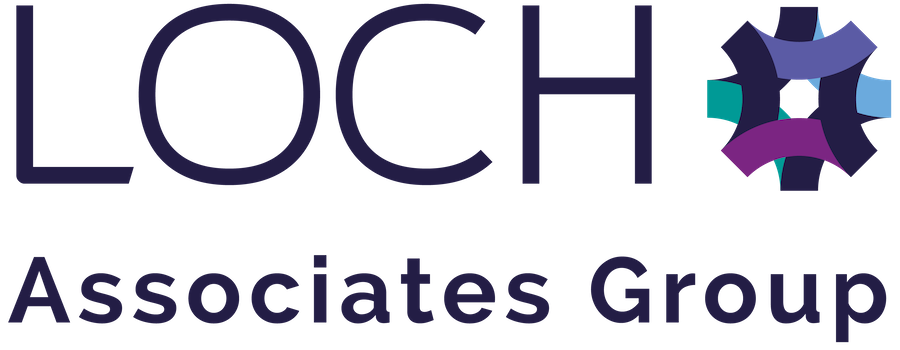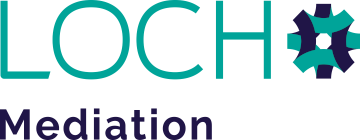Grievances may be raised by individuals or registered by multiple members of staff, which is known as a collective grievance.
The types of grievances raised in the workplace typically stem from interpersonal issues such as discrimination, bullying and harassment, as well as discontent regarding pay and benefits, workload and working conditions.
Familiarity with different types of grievances can empower employers to devise clear grievance procedures, which can be disseminated to the workforce. Corporate policies regarding grievances should be underpinned with an understanding of the areas of law that different types of grievance may relate to, such as the Equality Act 2010 and the Working Time Regulations 1998.
Loch Law assists employers in handling different types of grievances that may arise in the workplace — both individual and collective — including preventing grievances through clear written policies, providing assistance with drafting procedural guidelines, offering interventions to facilitate enactment of policies, and/or representing or assisting your business in the event that a grievance reaches an Employment Tribunal.
Speak to one of our experts today for a free consultation.
Individual and collective grievances
The correct procedural approach to processing a grievance depends on its type, and whether it is raised by an individual or a group.
Individual grievances are raised by a single member of staff. The grievance will relate to an aspect of their personal employment — for example, they may be experiencing an ongoing issue such as dissatisfaction regarding their personal pay or benefits, or feel that their role presents unreasonable challenges, i.e. they may have a disability for which reasonable adjustments have not been made.
When employers are handling individual grievances, their approach must be compliant with the Acas Code of Practice. Putting corporate policies regarding grievances in place is strongly recommended. However, in the absence of an organisational procedure, the Acas Code of Practice can be drawn on by employers to ensure due diligence in processing a grievance.
Collective grievances are grievances raised by more than one member of staff. If two or more employees raise the same issue with management, the collective grievance must be signed by all involved and submitted in written form. The procedure for following up a collective grievance is generally similar to that which is recommended in the event of an individual grievance, and usually involves conducting an investigation to assess the situation(s) leading to its submission, followed by meetings focussed on reaching a resolution.
Good to know: The Acas Code of Practice excludes collective grievances from its guidelines, recommending that organisations devise their own.
Loch Law can advise employers from all kinds of businesses on processing collective grievances, and/or devising related company policies.https://www.youtube.com/embed/kRdQp6nJTbM?feature=oembed
Interpersonal issues: bullying, harassment and discrimination
Interpersonal issues are a common cause of grievances in the workplace. They can arise from a wide variety of different circumstances, and can result in individual and collective complaints. Depending on the circumstances, a grievance related to interpersonal dynamics is likely to relate to bullying, harassment, discrimination or a combination of the three.
Different statutory regulations which may be relevant to processing particular grievances depending on their nature. However, in general, bullying, harassment and discrimination are all behaviours which breach the Equality Act 2010. In particular, the Act specifies nine protected characteristics — it is against the law to treat a member of staff unfavourably in any context, in relation to the following attributes:
- Age
- Sex
- Disability
- Gender reassignment
- Marriage and civil partnership
- Pregnancy and maternity
- Race (including colour, nationality and ethnic origins)
- Religion or belief (or lack thereof)
- Sexual orientation
It is important that employers understand what behaviours constitute bullying, harassment and discrimination, and devise policies which clearly explain them to staff. According to the Acas guidelines:
Bullying constitutes “offensive, intimidating, malicious or insulting behaviour, an abuse or misuse of power through means that undermine, humiliate, denigrate or injure the recipient.” Bullying may not be as clear-cut as it appears. For example, subtle behaviours like copying in other colleagues unnecessarily into critical memos or exclusion may not be immediately apparent to others, underscoring the need for a thorough investigation to proceed from grievances of this type.
Harassment constitutes “unwanted conduct related to a relevant protected characteristic, which has the purpose or effect of violating an individual’s dignity or creating an intimidating, hostile, degrading, humiliating or offensive environment for that individual.” It is important to note that grievances related to harassment can be registered by people who do not necessarily have protected characteristics. For example, despite not being the victim in the situation, an employee may file a grievance relating to others being victimised for their religions or sexual orientations, as they are also made uncomfortable by unchecked intolerance in the atmosphere.
Good to know: The differences between bullying and harassment are difficult to define exhaustively, and so employers are recommended to provide examples of behaviours which will be regarded as bullying and harassment in their particular workplace. In general, harassment is more likely to relate to abuse which invokes protected characteristics, i.e. sexual harassment, while bullying may take less direct forms, i.e. making pointed comments about job security without foundation.
Discrimination can take four principal forms:
- Direct discrimination is when an employee or collective receives unfavourable treatment due to protected characteristic(s) such as age, sex or race.
- Indirect discrimination is a policy or exercise which appears fair, but actually involves discrimination, i.e. a recruitment requirement that applicants reach a certain height may negatively impact certain population groups, such as women.
- Harassment as a form of discrimination involves communications or policies that can be interpreted as targeting or excluding a protected characteristic, from which a culture may develop in which certain staff feel unwelcome.
- Victimisation as a form of discrimination involves unfair treatment of employee(s) with regards to managerial decisions such as being passed over for a promotion which they attribute to prior involvement in a situation in which they complained about discrimination, or was otherwise involved, i.e. providing supporting testimony in a related grievance.
Employers are advised to create policies that enable them to navigate the relationships between protected characteristics and circumstances in which they traditionally manifest.
Key areas in which businesses can anticipate grievances and reduce their likelihood by developing clearly-defined policies include:
- Maternity and paternity leave. For example, staff on maternity, paternity or shared parental leave may feel discriminated against if they are not updated satisfactorily about matters relevant to their role in their absence.
- Religious holidays and related modifications to the working day or absences. Although there is no requirement to grant time off for periods of religious observance or to allow modifications to the timetable or duties of an employee, grievances may be filed if employees are made to feel unhappy or uncomfortable as a result of managerial decisions of this nature.
- Dress code. Ensuring that the corporate dress code does not cause problems for staff in relation to self-expression regarding protected characteristics is key for preventing related grievances.
- Communications between staff and the use of social media in the workplace. Making employees aware of messaging methods and forms of discourse which are unacceptable can help prevent related grievances. Bullying, harassment and discrimination — where a protected characteristic is involved — are preventable by-products of group chats and online communication. Incidents of this nature which prompt grievances are commonly associated with the mocking and/or exclusion of particular employees.
If you would like advice from Loch Law in drafting corporate policies to prevent discrimination in these and/or additional areas that are particularly relevant to your business, don’t hesitate to contact us.
Pay and benefits
Employers may encounter a wide variety of different issues related to pay and benefits in the workplace. These commonly relate to issues including:
- Dissatisfaction with their wages and/or benefits;
- Discrepancies between their wages and/or benefits and other members of staff in similar roles;
- Discontent relating to expenses, i.e. wishing to be reimbursed for travel to and from work.
It is vital that organisations commit to equal pay and a fair financial structure in compliance with the Equality Act 2010 and the National Minimum Wage. Ensuring that employees know how their pay and benefits package relates to their statutory rights from the outset of employment can minimise the likelihood of subsequent grievances and claims.
Good to know: If staff with protected characteristic(s) feel that their pay and benefits package is relatedly inferior to co-workers, they may submit grievances regarding pay and benefits which also involve discriminiation.
Grievances related to the gender pay gap
The gender pay gap is a particularly common trigger for grievances related to pay and benefits. Under the Equality Act 2010, men and women are entitled to receive equal pay for equal work. Equal work can be:
- Like work, i.e. work which involves similar skills, tasks and responsibilities;
- Equivalent work, i.e. work which is found to be of equal value on analysis;
- Equally valuable work, i.e. work which is not similar or equivalent, but has been found to be of equal value in terms of output and techniques used.
Gender pay gap reporting is compulsory for all businesses with over 250 employees. Many smaller businesses are also declaring the differences in salaries between male and female staff in the interests of transparency. Identifying and addressing pay gaps of this nature can help safeguard a business against related grievances being filed.
Grievances about working time and working conditions
There are many different kinds of grievances that employees may raise regarding the timetabling or nature of their role. Typical grievances related to working time and conditions may involve:
- Discontent regarding annual leave, rest breaks, non-working days and weekly breaks;
- Safety and comfort during the working day;
- Effects of the work on mental and physical health;
- The way their role is configured i.e. some employees may feel that reasonable adjustments have not been made to accommodate a disability or may feel entitled to changes to their employment setup such as flexible working.
Ensuring that employees know their statutory rights in relation to working time and the nature of their role can help prevent grievances made on the basis of incorrect assumptions. For instance, employees may submit grievances related to wanting flexible working time, when in fact an employer is only obligated to give requests of this nature due consideration, rather than to grant them. Employers should be aware that when such requests relate to a protected characteristic such as a disability, grievances brought may also invoke discrimination.
Loch Law can offer extensive expertise in providing comprehensive advice to employers on WTRs and flexible working requests, enabling organisations to comply with the relevant guidelines while ensuring that all staff are working appropriate hours, minimising the risk of any related disputes and claims.
Tactical grievances
Grievances can be raised tactically by employees who are already the subject of a disciplinary matter — i.e. if they are underperforming — as a means of deflecting responsibility. Where this is the situation, employers will need to ensure that they make efforts to distinguish genuine grievances from ones which have been raised tactically, which usually necessitates following the correct grievance procedure, so as to investigate the claim(s) as fully as possible.
Depending on the circumstances, it may be necessary to pause the disciplinary procedure already underway, or the two undertakings may be able to proceed in parallel. External legal advice can be sought to ensure procedural correctness overall in matters of this nature.
Whistleblowing
It is important to distinguish between whistleblowing and personal grievances. Whistleblowing is a term describing grievances that consist of reporting wrongdoing at work considered to be “of public interest” — i.e. if an employee “blows the whistle” regarding their company transgressing laws relating to the protection of clients’ data.
Good to know: Employees who report on wrongdoing of public interest within their company are protected by law from losing their job for damaging the reputation of the company by whistleblowing. Whistleblowing may involve reporting if someone’s health and safety is in danger, if a criminal offense such as fraud is being covered up, or if workplace activities risk damage to — or actually damage — the environment.
In order to protect against whistleblowing, employers can ensure that all company policies preclude wrongdoing and that literature is produced which communicates these guidelines effectively to staff, so that operations are conducted in compliance with the law.
Loch Law can help you audit your business, devising or refining policies to safeguard your organisation against harbouring practices or characteristics that could result in whistleblowing.
How Loch Law can help
If you are considering changing your approach to handling grievances and/or wish to develop policies that help safeguard your employees against situations which may result in submitting complaints, Loch Law can offer tailored assistance in a range of different capacities, including:
- Developing and implementing procedures relating to grievance matters
- Ensuring that the relevant processes are carried out in accordance with Acas guidelines
- Strategic planning in order to manage and minimise the risk of claims
- Conducting investigations. Any internal investigation should be unbiased, fair and reasonable, and a third party is often best-placed to collect this evidence. Interviews tend to be an essential part of the process, enabling all parties to give their view on the situation
- Managing and conducting meetings in relation to all parts of the process








